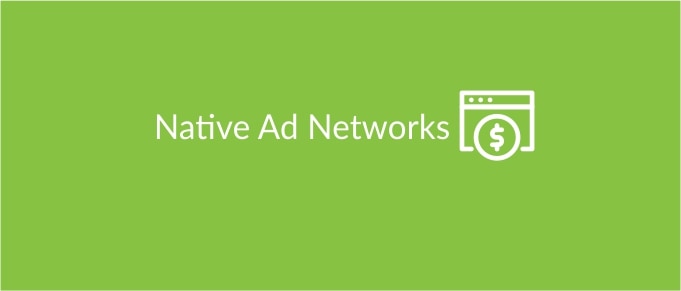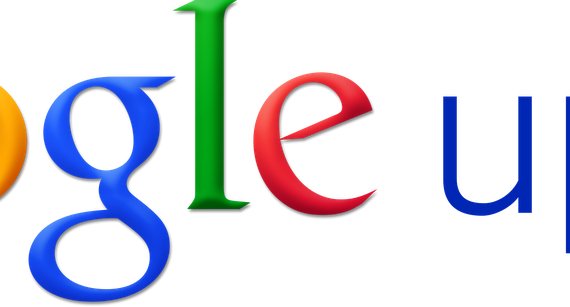Internet publicizing has developed throughout the years.
Gone are the days when exemplary flag promotions used to rule the internet publicizing scene. These days, individuals lean toward promotion groups which are useful, non-meddling, and alluring.
Local Ads have every one of these fixings and have turned into a hit with the group of spectators on the loose. It is the type of promoting which associates and mixes in with the substance so delightfully that they don’t show up as advertisements by any stretch of the imagination.
This is the prime reason which has prompted the ascent of local advertisements.
Along these lines, on the off chance that you are vigilant for a very compensating Best Native Ad Network for adapting your site, at that point this post displaying Best Native Advertising Networks is for you.
It will help you in picking an advertisement arrange which is most appropriate for you.
In any case, on the off chance that you are in any case confounded about Native Ads or Native Advertising, here is a concise diagram about Native Advertisements that will enable you to get moving and benefit from this publicizing model.
Revcontent
Revcontent is a quickest developing native advertisement and also one of the best native ad networks arrange as of now serving more than 250 Billion local promotions in a month.
The promotion system is reliably conveying outcomes to the two distributors and sponsors. It allegedly has a larger number of clients reach than Amazon.
Likely one reason which has made Revcontent a promising promotion system is the way that it works on a 20% income offer model which has made it a more benefit situated for publicists just as distributors.
Revcontent is directly serving enormous names in the distributing field, for example, Forbes, NBC News, CBS, etc. A portion of its center highlights incorporates an exceedingly responsive gadget, boundless customization of the API, vast parchment alternatives, exhibition usage, and significantly more.
It has demonstrated its value in different specialties, for example, wellbeing, accident protection, money, and legislative issues.
So, Revcontent is useful for any specialty you are working with. It has no information exchange expense, and you can look forward nonstop help. Revcontent gives the capacity to control your promotions improvement completely.
It offers ground-breaking focusing on capacities. You can pick the distributor, working framework, nation, and that’s just the beginning.
It gives completely responsive gadgets, and you get numerous arrangement alternatives inside the distributer’s site.
Native Ads
Native Ads is a standout amongst the most prevalent premium promoting systems and the best native ad networks. The best thing about Native Ads is the way that it is good with Google AdSense.
They run a directed endorsement procedure, and you can anticipate that a reaction should your endorsement status inside 24 hours. Local advertisements don’t offer high rates per click.
In this way, in the event that you are searching for a lucrative local advertisement organize, Native promotions may be very baffling for you.
Rates ordinarily spin around 1 penny to 3 pennies a tick. In any case, it is a stable and verified local publicizing system with clear terms and rules. Consequently, you can expect a dependable sound association with them.

Nativo
It is difficult to beat Nativo in the domain of unadulterated local publicizing in that it embodies marked substance inside the language of distributing streams.
Only five years of age, the Native system is coordinated on the distributer’s side and offers plenty of screens and gadgets.
All advertisements are made to coordinate the individualistic feel of every distribution, and the exertion is to improve the whole procedure.
It savors the help of scope of rumored distributors, which reflects in its responsibility towards quality.
TripleLift
Triplelift is a main and best Native Ad Networks for sponsors and distributors. Triplelift chips away at a CPM premise. It offers the chance to transform your substance into wonderful in-feed local advertisements.
The Triplelift local trade enables you to access in-feed promotion stock crosswise over most premium distributors all through the world, legitimately through your DSP.
Triplelift offers the best open door for site adaptation by including new, gradual income stream. Its in-feed promotions proceed to coordinate with the exceptional look and feel of your site subsequently adding to the purchasers experience through consistently incorporated advertisements.
Triplelift proceeds to offer extraordinary looking promotions. Its restrictive PC vision innovation can comprehend the basic components like faces, objects, content regions, and the sky is the limit from there, for designing the pictures flawlessly – on any site on any gadget – inevitably.
Triplelift offers local promoting that adjusts itself to the look and feel of its condition. Triplelift has made an RTB-empowered local promotion trade for permitting publicists to influence their current purchasing stages for getting to premium, in-feed local advertisements.
Triplelift furnishes the chance to work with top brands and have full inventive control for a consistent, continuous perusing background. Distributors can execute the single-line code on their page. Additionally, this best native ad networks, Triplelift offers full technical support for the whole distance.
Gravity
The Gravity system is another eminent and best native ad networks that appreciates the support of AOL, including probably the best distributors in the market.
As a distributor, you need at any rate of 1 million online visits to join its advertisement arrange.
To keep clients from getting overpowered with a wide range of data, Gravity deals with a pertinent substance that keeps them locked in.
AdPushup
AdPushup is an advertisement connect with cutting edge income improvement highlights, for example, promotion design streamlining, header offering, creative promotion positions (counting local), advertisement intercession, Adblock recuperation, and AMP transformation.
AdPushup is an overseen administration, i.e., distributors don’t need to do the truly difficult work of dealing with their advertisement tasks—the promotion operations group at AdPushup will deal with that.
Furthermore, they have request organization with top-level promotion systems and trades, for example, Google AdX, AppNexus, Rubicon, and Criteo, among others.
Their promotion enhancement apparatuses combined with premium interest from enables distributors to convey better client experience and accomplish higher CTRs and CPMs, with a normal income inspire of 33% for their distributing accomplices.
Facebook Audience Network
On the off chance that you have a decent measure of portable traffic, the Facebook Audience Network may be the ideal answer for you.
The Facebook Native Ads group have completely modified the structure of the advertisement to make it flawlessly fit with any plan. It will mix with your site’s substance and not bother the guests at all.
As this system is overseen by Facebook, you can expect top quality promotions and an incredible encounter for the clients also.
Earnify
Earnify is another hugely well known local publicizing organization. Distributors can gaze upward to superb income imparts together to extremely quick installment procedure and full control on promotions.
Then again, Advertisers get predominant focusing on outstanding traffic quality.
Earnify utilizes a CPA income model and surveys locales before supporting them. It gives a continuous detailing framework. The installment is made utilizing Net 21 premise.
The installment choice is Payoneer, and the base payout edge is $20. It is reasonable for high traffic locales.
EvaDav
An accomplished group in the publicizing field that has been around for a considerable length of time offers you an alternate sort of income stream for your business.
On the off chance that you are an online distributor and wish to adapt your traffic with EvaDav, the procedure is basic and fast.
The upside of this stage is that it has a higher active visitor clicking percentage and covers all geo areas.
It’s another sort of item with pop-up messages. A little popup will show up on the clients’ screen which by and large has a higher rate of transformation.
The distributors get week by week installment through PayPal and other driving installment alternatives.
You additionally have the alternative to profit through the referral program that offers 5% of the income from the alluded distributors.
Polymorph
Getpolymorph is another astounding stage that is known for innovative plans to create commercials for you.
It is a phenomenal choice on the off chance that you need to expand your income, diminish cost and let individuals think about your item or administrations in an imaginative manner.
It will enable you to introduce your item and administration to a large number of individuals so that it won’t resemble a notice to them.
Read more 10 best Google Adsense alternatives to join
_______________________________________________________________________________
Please contact us for seo service packages at TDHSEO.COM.
TDHSEO Team
Email: tdhseo@gmail.com
Skype: tdhseo
https://www.facebook.com/tdhseo
Thank you!











































